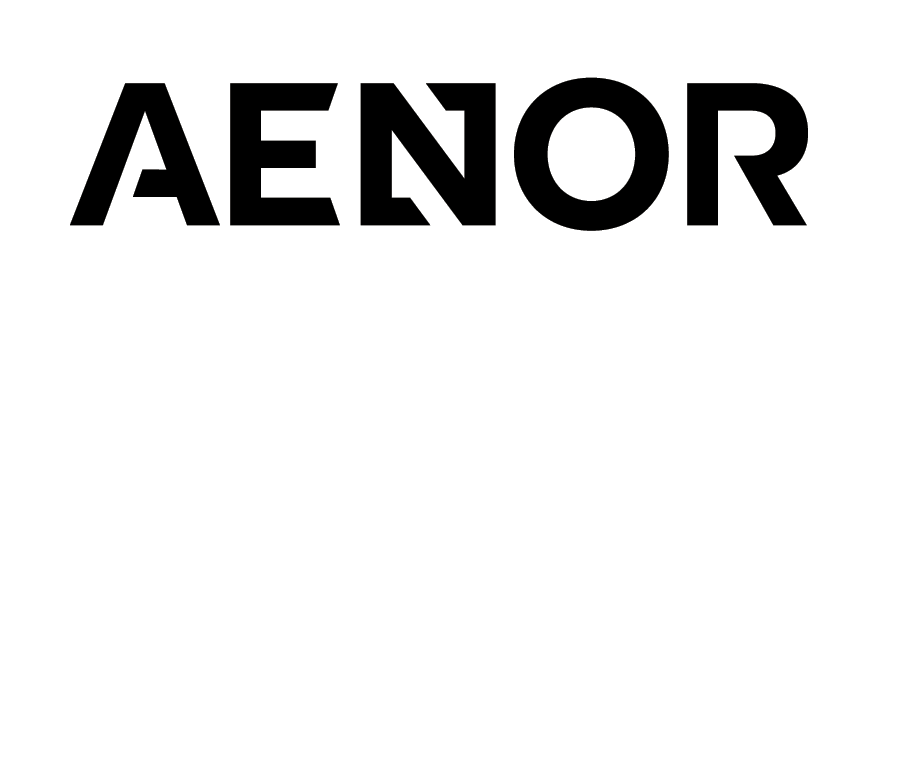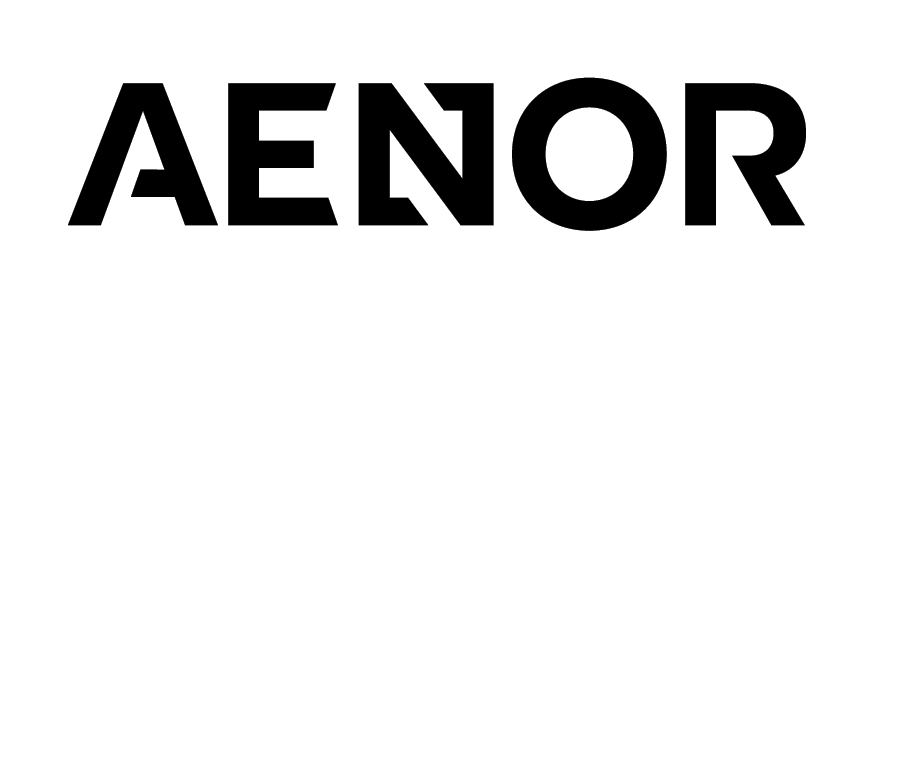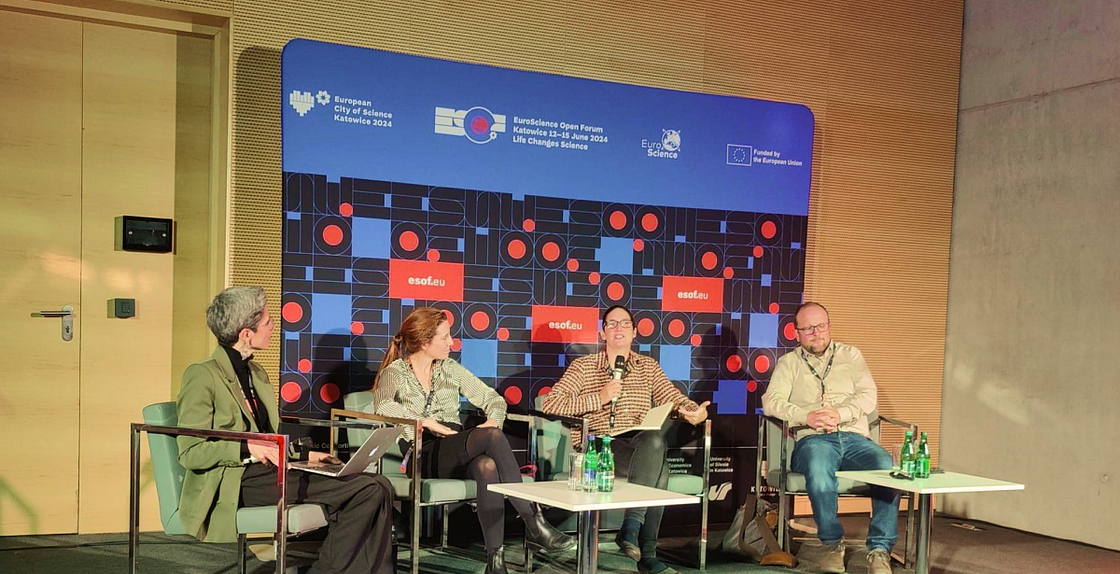
I recently had the privilege of moderating a panel at the ESOF 2024 conference in Poland. ESOF, always held in the designated European City of Science, is a unique event funded by the European Union and organized by local authorities. It brings together scientists, policymakers, and civil society to foster collaboration and innovation at both local and global levels. This made it the perfect setting to explore the intersection of local air quality improvements and global climate action.
Our session, “Escaping the Tragedy of the Commons? Motivating Policies for Global Emissions Reductions Through Local Improvements in Air Quality,” featured insights from Andrea Pozzer, Senior Researcher at Max Planck Society, Chloe Hill, Policy Manager at European Geosciences Union and Leonor Sierra, project lead for Risk Know-How, and second VP of Ciencia en el Parlamento.
The panel aimed to tackle a big question: can local air quality measures, often seen as isolated actions, actually spark broader climate policies? We explored whether these local efforts could serve as powerful motivators for more extensive climate actions.
Throughout the session, we chatted about the complexities of communicating the urgency of air pollution and climate change to the public and policymakers. We highlighted how local air quality improvements can yield immediate health benefits, making them popular and well-accepted measures.
Two key takeaways from the session:
1. Identifying successful local air quality measures and scaling them up or adapting them for broader applications is essential for impactful climate action.
2. Effective communication is vital for building public and political support. Being a trusted source means conveying the complexities and risks while clearly highlighting the benefits, so we shouldn’t shy away from either.
Focusing on these elements can foster a better understanding and more substantial support for meaningful local, national, and global climate action.
Public Perception and Engagement.
One major theme of our discussion was effectively communicating the urgency of air pollution and climate change to the public and policymakers. In this segment, we addressed some key questions.
How do current air pollution trends highlight the need for immediate action?
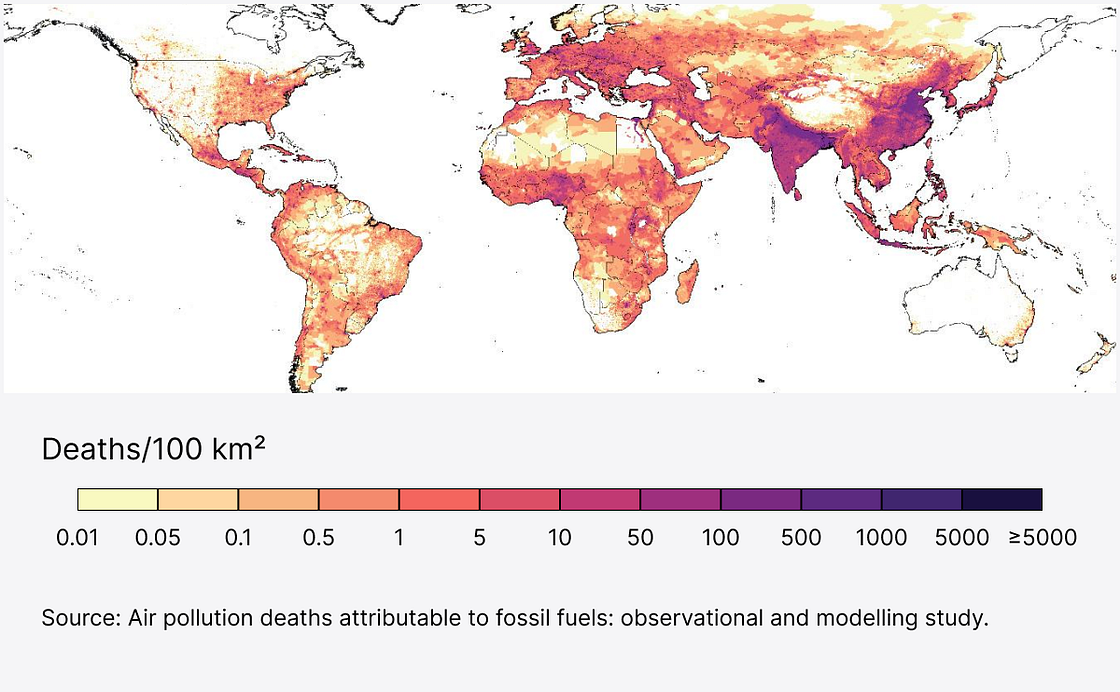
Andrea pointed out that while we have progressed in many areas, significant challenges still underscore the need for immediate action. Recent data also shows that despite improvements in some regions, air pollution poses serious health risks and contributes to climate change. For instance, areas with high levels of particulate matter (PM2.5) and nitrogen dioxide (NO2) still experience higher rates of respiratory and cardiovascular diseases. This persistent issue highlights that reducing air pollution remains a critical priority to protect public health and mitigate climate change effects.
Conversely, if we consider China’s example, the implementation of China’s Clean Air Action successfully avoided 0.57 gigatonnes of anthropogenic CO2 emissions, which is 5.5% of China’s real-world emissions in 2020.
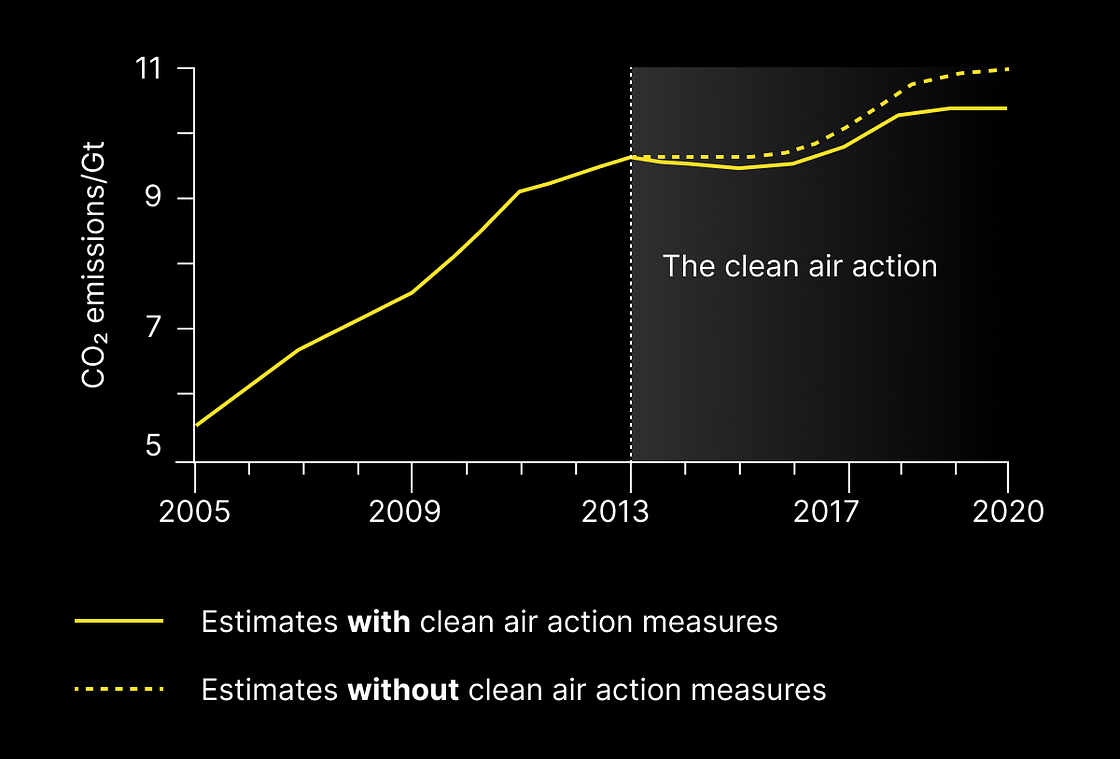
How can we effectively convey the urgency of these issues to the public and policymakers?
The general European public already understands the necessity of policy changes. According to a Eurobarometer survey, 78% of Europeans agree that the environment directly affects their health, and 84% believe EU legislation is necessary to protect the environment. However, the information, tools, and knowledge are hard to access.
The speakers emphasized the importance of making scientific evidence accessible and relatable. To effectively convey urgency, we need to use clear, straightforward language that connects with people. Visual tools, such as infographics and interactive maps, can help illustrate the direct impact of air pollution on health and the environment. Stories and case studies showing tangible benefits of air quality improvements can motivate action. Additionally, leveraging trusted community leaders and influencers to spread the message can enhance credibility and reach.
What are the barriers to communicating the benefits of air quality improvements?
There are several barriers, including the complexity of the science, which can make it difficult for non-experts to understand the full benefits. There is also often a disconnect between short-term costs and long-term gains, making it hard for policymakers to justify immediate expenditures. Public fatigue with environmental issues due to constant exposure to alarming news without quick results can dampen enthusiasm for new initiatives. To overcome these barriers, building trust by consistently providing accurate information, demonstrating successful outcomes from similar initiatives, and highlighting the immediate health and economic benefits alongside long-term climate goals is essential.
Policy and Strategy.
We also delved into the strategies and policies necessary to align local actions with global climate goals.
How can we collaborate effectively with policymakers and researchers in developing air quality policies?
Establishing strong networks between policymakers and researchers is essential before the situation gets dire. Building these connections early on allows for timely action, better communication, and collaboration when developing air quality policies. Strategies to maintain these connections include regular meetings, joint workshops, and collaborative research projects. This proactive approach helps ensure that when urgent issues arise, there is already a foundation of trust and understanding to facilitate effective action. Additionally, researchers need to focus on providing policy advice without conflating these discussions with funding requests, as this can maintain a clear, professional relationship and ensure that the conversation remains focused on collaborative solutions.
How can scientific research be made more accessible and actionable for policymakers?
There is a clear need to present scientific research in a way that is both accessible and actionable for policymakers. This involves simplifying complex data into clear, concise formats such as infographics and executive summaries. Scientists should focus on aligning their communication strategies with the needs and priorities of local governments. For instance, engaging communities and local governments directly through public forums, workshops, and partnerships can make the research more relatable and easier to implement in policy decisions.
How can local air quality policies support broader global climate objectives?
Local air quality policies can boost global climate goals by hitting two birds with one stone, simultaneously cutting down on air pollution and greenhouse gases. For instance, pushing for renewable energy and electric vehicles helps reduce pollutants and CO2 emissions.
Successful local projects can act as blueprints for bigger policies, with practical strategies that can be scaled up. Better local monitoring provides crucial data for global climate models, helping us understand where pollution is coming from.
When communities see the immediate health benefits of cleaner air, it raises public awareness and support for broader climate actions, building grassroots demand for stronger policies. Lastly, tying air quality measures to larger climate strategies ensures we use resources wisely and maximize our efforts.
What strategies can overcome resistance to air quality and climate policies?
Overcoming resistance to air quality and climate policies involves a few key strategies:
- Getting stakeholders involved right from the start and being open about the benefits and costs of new measures.
- Showing clear evidence of health and economic benefits can help win public support.
- Offering incentives, like subsidies for green tech and grants for businesses that cut emissions, can make new policies more appealing.
- Addressing concerns from industries that might be affected, like providing retraining programs and creating jobs in new sectors, can also reduce pushback.
It’s also helpful to engage the community with education campaigns and pilot projects showing cleaner air’s real benefits. If you’re trying to influence a group, find out what they care about and align your message with their interests.
So, what did we learn from our deep dive into local air quality and global climate action at ESOF 2024? In a nutshell, local efforts are not just isolated actions but powerful catalysts for broader climate policies. Improving air quality locally can drive significant global benefits, from cutting greenhouse gases to enhancing public health.
Of course, everything depends on the region, the issues specific to the land, and countless other variables. But in the end, it’s about creating a cohesive strategy that leverages local successes to inspire global action. By building robust, contextually relevant communication strategies, we can create a cohesive and effective approach to tackling climate change.
Let’s keep the conversation going and the air clean! If you want to be a part of the change and create tools that enable cleaner air, reach out to hello@vizzuality.com.




